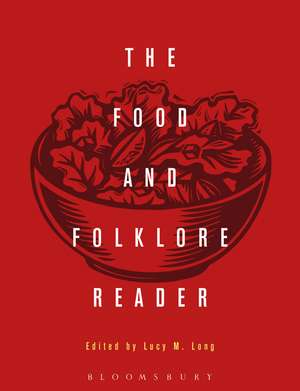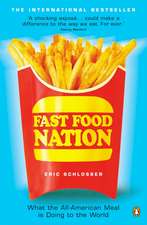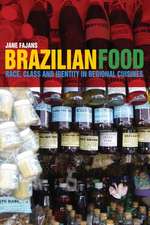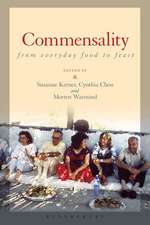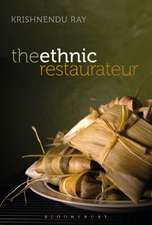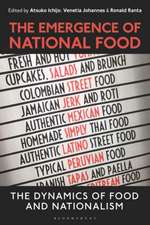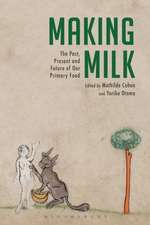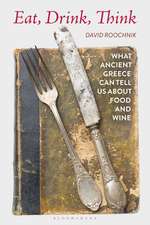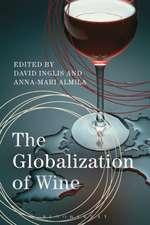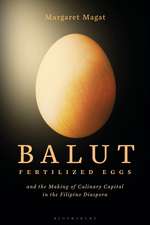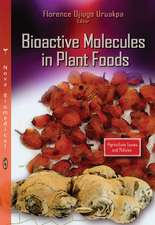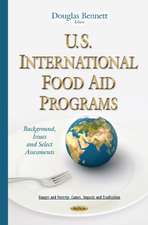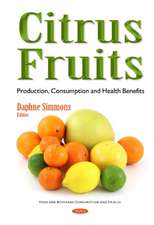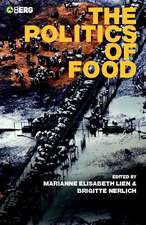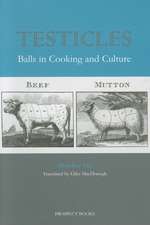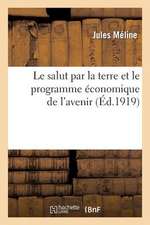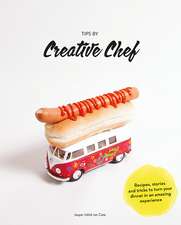The Food and Folklore Reader
Editat de Lucy M. Longen Limba Engleză Hardback – 18 noi 2015
| Toate formatele și edițiile | Preț | Express |
|---|---|---|
| Paperback (1) | 262.42 lei 3-5 săpt. | +89.83 lei 7-13 zile |
| Bloomsbury Publishing – 18 noi 2015 | 262.42 lei 3-5 săpt. | +89.83 lei 7-13 zile |
| Hardback (1) | 906.19 lei 6-8 săpt. | |
| Bloomsbury Publishing – 18 noi 2015 | 906.19 lei 6-8 săpt. |
Preț: 906.19 lei
Preț vechi: 1220.92 lei
-26% Nou
Puncte Express: 1359
Preț estimativ în valută:
173.44€ • 180.39$ • 145.35£
173.44€ • 180.39$ • 145.35£
Carte tipărită la comandă
Livrare economică 13-27 martie
Preluare comenzi: 021 569.72.76
Specificații
ISBN-13: 9780857857231
ISBN-10: 0857857231
Pagini: 480
Ilustrații: 3 bw
Dimensiuni: 189 x 246 x 27 mm
Greutate: 1.38 kg
Editura: Bloomsbury Publishing
Colecția Bloomsbury Academic
Locul publicării:London, United Kingdom
ISBN-10: 0857857231
Pagini: 480
Ilustrații: 3 bw
Dimensiuni: 189 x 246 x 27 mm
Greutate: 1.38 kg
Editura: Bloomsbury Publishing
Colecția Bloomsbury Academic
Locul publicării:London, United Kingdom
Caracteristici
Expansive coverage, from seminal works on identity and aesthetics to innovative scholarship on contemporary food issues, such as culinary tourism and food security
Notă biografică
Lucy M. Long founded the non-profit Center for Food and Culture, Bowling Green, Ohio, USA, in 2007. She began developing food studies courses while teaching Folklore and Popular Culture at Bowling Green State University, Ohio, and is the author of Culinary Tourism (2004), Regional American Food Culture (2009), and numerous articles on foodways.
Cuprins
General IntroductionPart 1: Foundations: History, Definitions, and MethodologiesIntroduction to Part OneDiscussion QuestionsReferences and Further ReadingReadingsPart 2: Food in Groups, Community, and IdentityIntroduction to Part OneDiscussion QuestionsReferences and Further ReadingReadingsPart 3: Food as Art, Symbol, and RitualIntroduction to Part OneDiscussion QuestionsReferences and Further ReadingReadingsPart 4: Food as Communication, Performance, and PowerIntroduction to Part OneDiscussion QuestionsReferences and Further ReadingReadingsPart 5: Food in Public and Applied Folklore Introduction to Part OneDiscussion QuestionsReferences and Further ReadingReadingsAppendix of SourcesIndex
Recenzii
[Lucy M.] Long has culled the archives of the field, using seminal works that define folklore as well as articles that explore more contemporary issues such as food security and culinary tourism . She does an admirable job covering diverse food cultures with examples from the many ethnic identities within the United States, Canada, Australia, Sweden, Jewish and Arab cultures, and many more . an admirable job of collecting these articles on how to study the vast and ever growing world of food and culture chiefly from Folklore's foodways perspectives.
This collection is sure to appeal to students in many disciplines, and really to anyone interested in the meaning of food. Accessible but sophisticated, the chapters start with foundational work, and then show us new angles on many familiar topics, from Spam to fruitcake, and draw us into the richness of contemporary folkloristics. This book belongs on every food scholar's shelves.
Want to understand why food is so important? Read this book. Expertly curated by Lucy Long, The Food and Folklore Reader traces the history of the field and details the depth and breadth of food in the vernacular. Appealing and accessible to the general reader, it is a must have for food studies scholars.
Folklore was one of the earliest disciplines to take food seriously and engage with popular disputations around literal taste. This excellent anthology reminds us of the insights that can be garnered in pursuing the productive methodologies and concepts in folkloristics. It is brimming with pedagogical tools for teaching about food, culture and society.
This is a major resource for the rapidly growing field of foodways and its study by folklorists. Opening with the pioneering work of Don Yoder in the 70s and closing with her own recent work on culinary tourism, Lucy Long casts a wide net as editor of this rich and diverse set of readings. From Jewish cuisine in the Mississippi Delta to the Dog's Eye Pie in Australia, Long leaves no stone unturned. Essential reading for understanding food worlds.
Food and Folklore Reader is an excellent contribution to the study of food from the distinctive angle that folklore provides.
This collection is sure to appeal to students in many disciplines, and really to anyone interested in the meaning of food. Accessible but sophisticated, the chapters start with foundational work, and then show us new angles on many familiar topics, from Spam to fruitcake, and draw us into the richness of contemporary folkloristics. This book belongs on every food scholar's shelves.
Want to understand why food is so important? Read this book. Expertly curated by Lucy Long, The Food and Folklore Reader traces the history of the field and details the depth and breadth of food in the vernacular. Appealing and accessible to the general reader, it is a must have for food studies scholars.
Folklore was one of the earliest disciplines to take food seriously and engage with popular disputations around literal taste. This excellent anthology reminds us of the insights that can be garnered in pursuing the productive methodologies and concepts in folkloristics. It is brimming with pedagogical tools for teaching about food, culture and society.
This is a major resource for the rapidly growing field of foodways and its study by folklorists. Opening with the pioneering work of Don Yoder in the 70s and closing with her own recent work on culinary tourism, Lucy Long casts a wide net as editor of this rich and diverse set of readings. From Jewish cuisine in the Mississippi Delta to the Dog's Eye Pie in Australia, Long leaves no stone unturned. Essential reading for understanding food worlds.
Food and Folklore Reader is an excellent contribution to the study of food from the distinctive angle that folklore provides.
